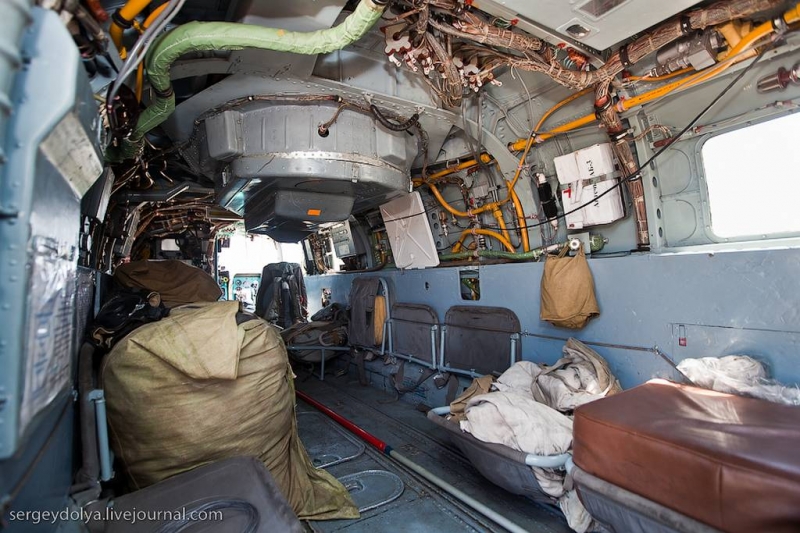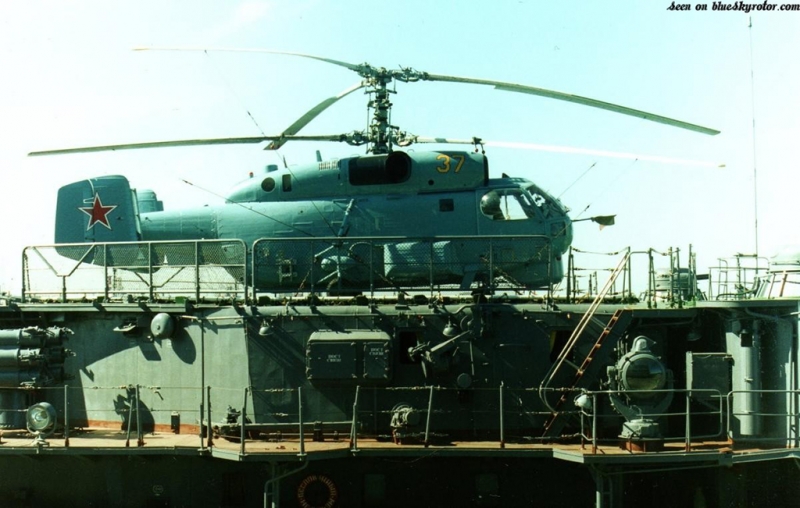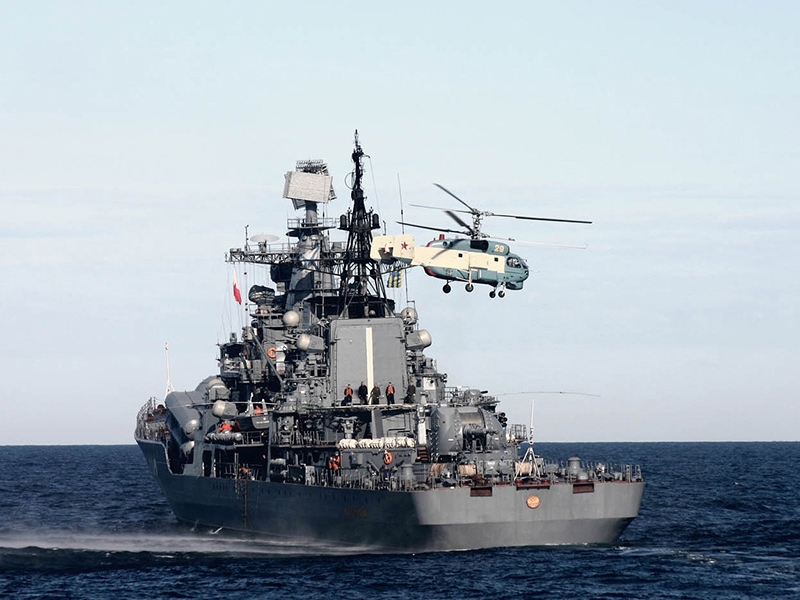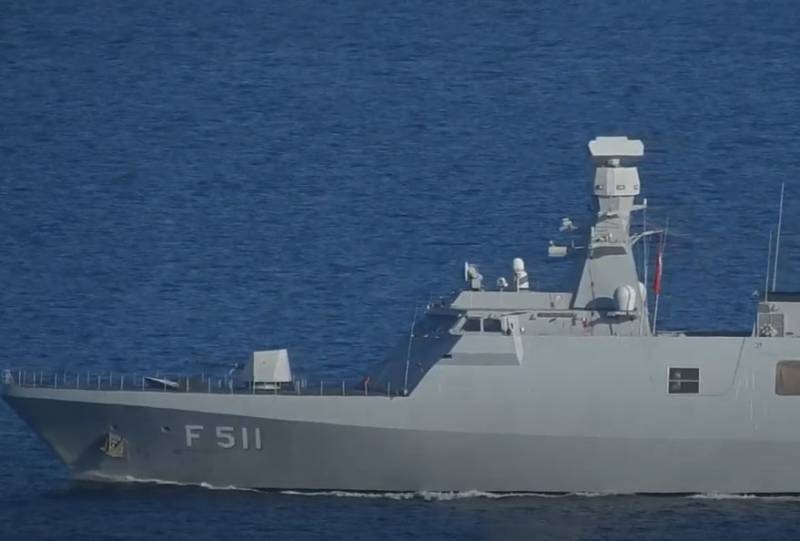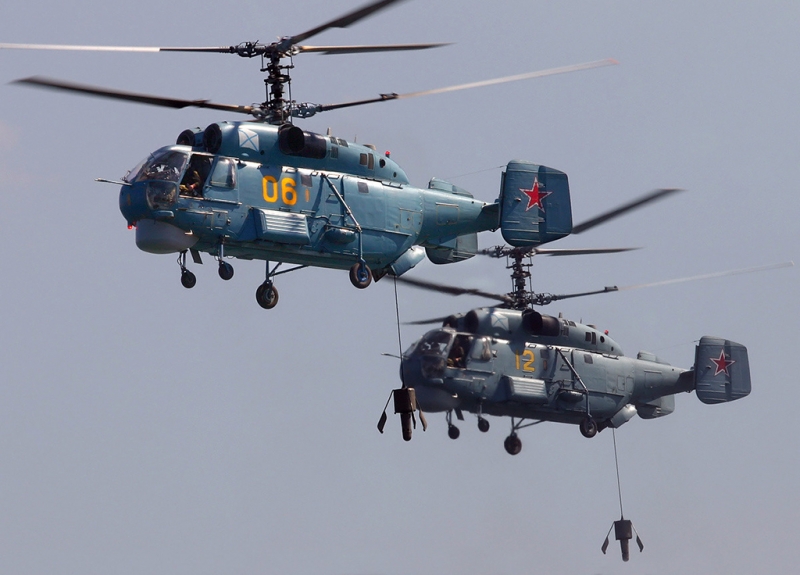
AT 1986 there was an event, world-shaking, - The Chernobyl accident. The highest level of radiation at the epicenter of the explosion did not allow even a short stay there a man. To understand the processes, occurring inside the reactor, It was necessary to obtain information from there. For this purpose, the device manufactured with sensors, placed in a long slender tube, resembling needle. For the installation of the measuring device in the center of the reactor choice fell on the Ka-27.
The Ka-27 – video
High maneuverability and precision helicopter autopilot, capable of for a long time to keep the Ka-27 to hover over one point, and at a constant height, tracking any perturbation of the environment, allowed to brilliantly perform the operation "Eagle".
Operating experience of the Ka-25, develops and brings over ten years, showed, that during this time he is hopelessly outdated, although it had been high hopes. Suffice it to note, that the Ka-25 with a load 600 kg could search for submarines 1 o'clock 10 minutes away 50 km from the aircraft carrier, and required at least four times more.
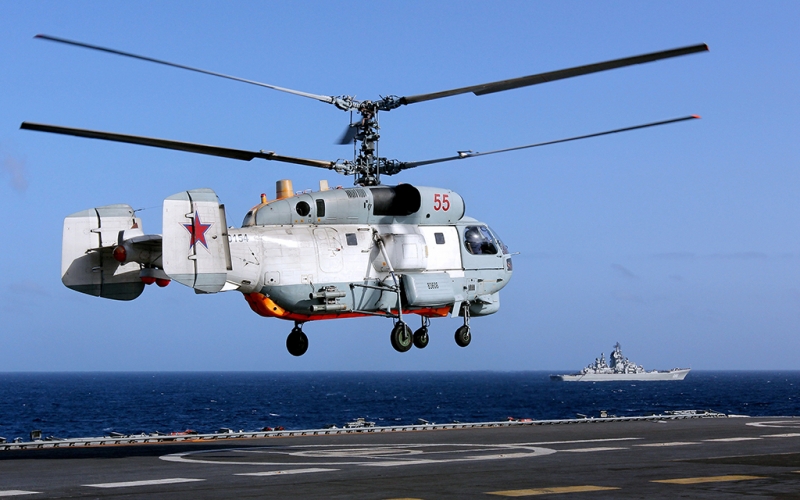
Especially disadvantages Ka-25 appeared in "Ocean" teachings, held in 1970 year. After analyzing the results, Naval Command concluded, that equipment under construction for heavy aircraft-carrying cruisers "Kiev" (project 1143) We need a new, a lifting and perfect helicopter.
Development of future Ka-27 started in 1972 by iodine views modification Ka-25, and the car was designated Ka-252. When this bet is placed on advanced gas turbine engines, power which is more than two times higher than predecessors. In this capacity increased to helicopter 4000 kg, which allowed him to combine in function designator and a shock machine.
On board the Ka-252 posted, in particular, aerobatic (PCV-27) and navigation (HRH-27) complexes, the crew to solve tasks in all areas of the oceans, including providing automatic withdrawal of the helicopter to the point of application of discharges of search and destruction of submarines. Besides, on board positioned sighting station search and "octopus" with DCM, tactical situation display, hydroacoustic stations (OGAS) "Ros-In", allowing paired with onboard radar to detect submarines underwater and above water, determine their coordinates and motion parameters, and towed on a rope aeromagnitometry, lowers sonar HCV-3 and sonobuoys. As a result, the crew increased to three, although for certain tasks is enough to pilot and navigator.
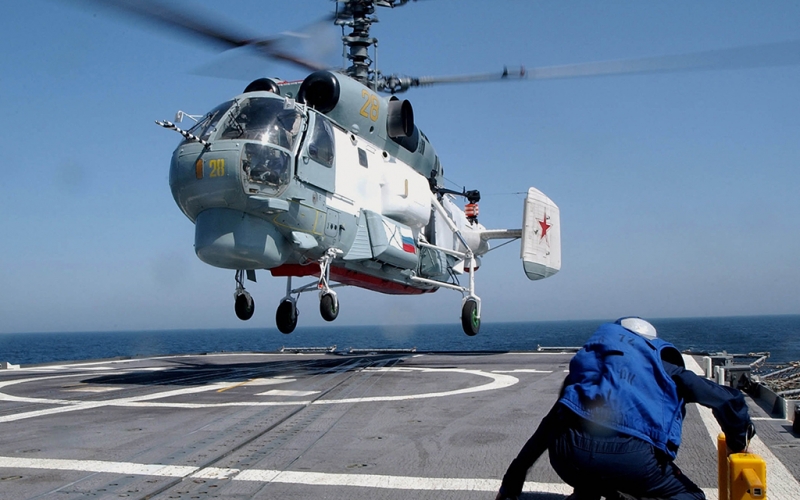
For an emergency landing at sea on the fuselage sides are inflatable ballonets, filling the air which occurs in 5 seconds b, and, as shown by tests, water in its normal position while holding the helicopter, and then flips. But this time is enough, to the crew left the car and took the life-saving appliances.
combat load, Hosted in the torpedo room, increased to 800 kg. It consisted of three types of self-suggestive torpedoes, including AT WW1, Two types of missiles torpedoes, including APR-2E, Omaboe bombs and depth PLAB 250-120.
For protection against homing air missiles with infrared homing heads were installed on the fuselage of HC-26 cassette ejection of decoys. According to experts, new helicopter surpassed Ka-25PL, depending on the problem being solved, three to five times, and one flight via OGAS can inspect the water area to 1600 quarter. m, and using sonobuoys - 2000 quarter. km.
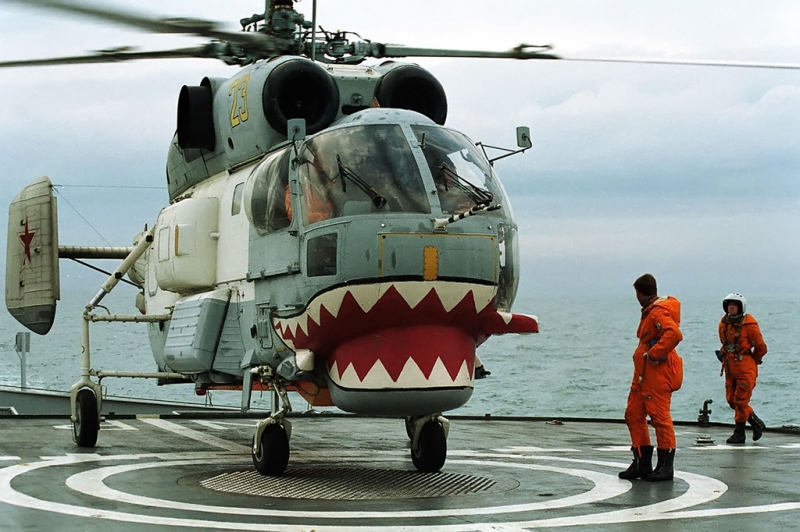
The first flight of the Ka-252 made in the 1973 by running a test pilot EDO E. Laryushyna. tests have shown, that the characteristics of stability and controllability of the helicopter to fly to allow limited naval platforms at air flow rates up to 20 m / s, with side and pitching and two to eight degrees respectively.
The maximum take-off weight Ca-27 in relation to the conditions of standard atmosphere - 12 t. But in the North, looks like, flew with overdrive. Pilot Vladimir Kim told, that one of the flights, when he was the co-pilot (assistant commander of the helicopter), He refused one of the engines. A helicopter with one complete refueling (gross weight of the machine - 14 t) gradually began to decline. Then in the air leaked two tons of fuel, and only after that the car went in level flight.
The export version of the Ka-27 was designated Ka-28. His delivery abroad began in June 1986 of the year, TO 2001 , more than was built in Kumertau 30 helicopters, including China (8 machines), India (13), Vietnam (8), Syria (2), Yugoslavia (2) and Cuba (4) in ASW and search and rescue embodiments.
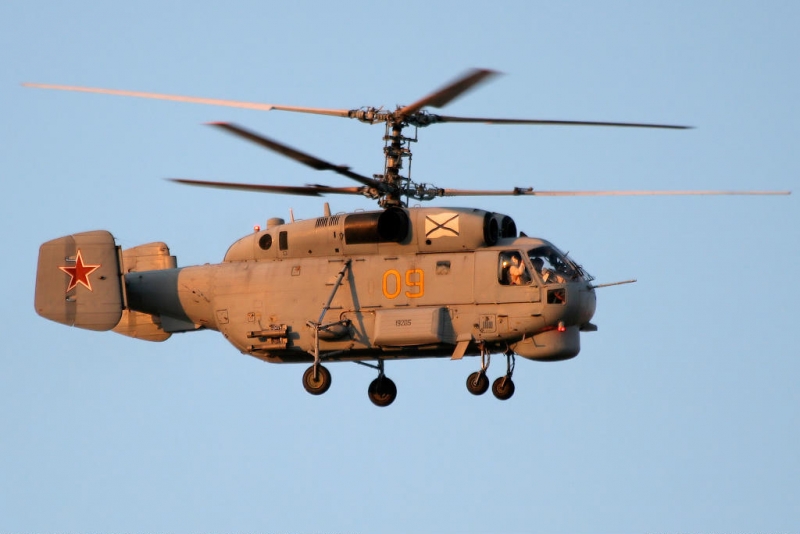
Ka-27 proved to be extremely successful and essential machine, because after a quarter of a century after the beginning of the export sales it is still in demand. So, in October 2009 , JSC "Kumertau Aviation Production Enterprise" (Ku checkpoint), included in the helicopter holding company managed by JSC "Russian Helicopters", It has produced the first batch of nine ordered anti-submarine helicopters Ka-28, manned tall engines TVZ-117VMAR increased power and at a nominal cruising modes, Navy of the Chinese People's Republic.
In the embodiment, the search helicopter equipped with sonobuoys, search and shock - anti-submarine bombs and aviatorpedami, including high-speed homing APR-2E "Orlan".
AT 1998 China, the Navy purchased five ASW and three search and rescue helicopter Ka-28, equipped with the latest at the time "Emerald" Complex search. ASW Ka-28 variants were based aboard two destroyers of the "modern", purchased in Russia, and combat Luhai class ships. Helicopters can also provide targeting supersonic anti-ship missiles SS-N-22 Sunburn, which are armed with these ships.
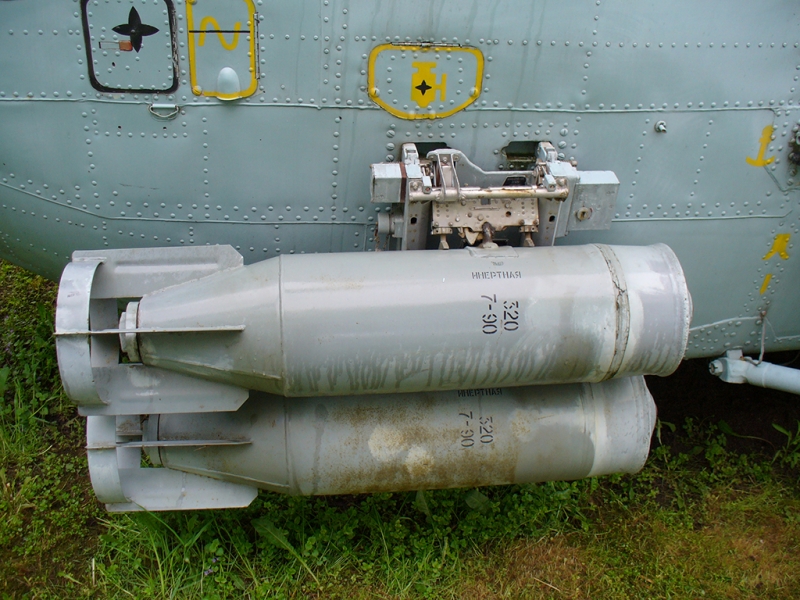
Depth charges, suspended from the antisubmarine helicopter Ka-27
Armament Ka-27
– combat load: 2000 kg
– Bombings: PLAB-250-120, OMAB
– torpedo: AT-1M, VTT-1, UMGT-1 'trencher', EPR-2 "Hawk-M»
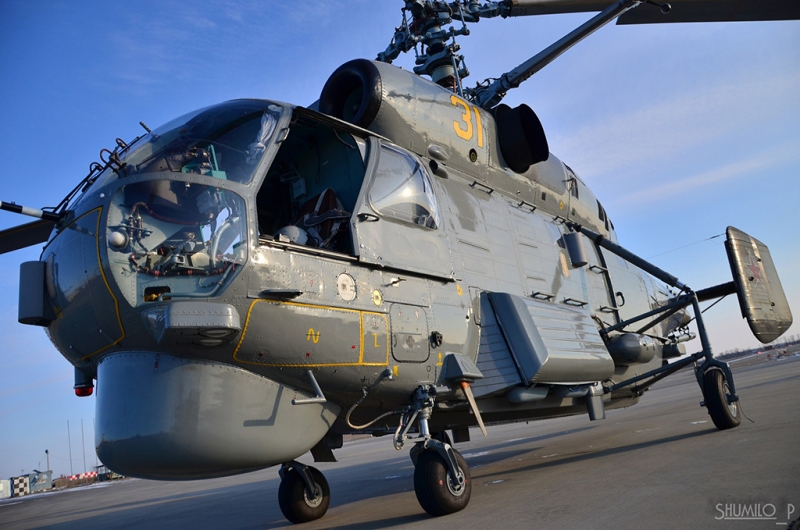
Search and sighting system "Octopus"
The airborne "Octopus" equipment includes:
– radar “Initiative-2km”, cowling which is located in the forward fuselage (It provides a navigation solution, detection of submarines in surface position), beacons and transponders;
– lowers sonar HCV station 3 (Ros-In), disposed in the rear part of the fuselage (It provides detection and determination of the coordinates of the submarine);
– sighting and computing device for automatic withdrawal of a helicopter in the reset point weapons;
– magnitometr APM-73V.
Besides, a helicopter dumped (in the jargon – exhibited) 36 gidroakkusticheskih buoys, warning (backsight) morskie aviabombı (Omaboe-H and D-Omaboe) and radio tracking beacon.
Detection range of surface targets when flying at an altitude of 100-500 m:
– in EPR 250 m - not less than 25 km;
– in EPR 2 m - not less than 5 km;
Detection range of underwater targets such as SSK pr.613 at speed 6-8 knots, depth 100 m, sea state 2 points - 8 km
As part of the PPP "Octopus" has a data-processing sub-system on the basis of an onboard digital computer (BCVM) and display the navigation system and the tactical situation. PPS has several different modes, providing a solution of anti-tasks: “Navigation”, “Search”, “Tracking”, “attack”, and auxiliary mode – “Control”. INTE provides primary reflection (radar) and secondary (VGS, CVM) information. screen diameter is 300 mm. DCM type STS-VM provides the 150000 operations per second.
In the SAS design are seven sorts of work: shumopelengovaniya (“nm”), ehoplengovaniya (“FL”), manual support (“RS”), step search (“AP”), automatic tracking (“ASC”), semi-automatic target tracking (“post”) and control.
The on-board automated system "Drive-SV-board", in conjunction with the navigation system and the ship's equipment is designed to address the broad range of navigation tasks, related to the flight over terrain bezorientirnoy (sea), interaction of helicopters in the group, as well as a drive to the airport or ship-based.
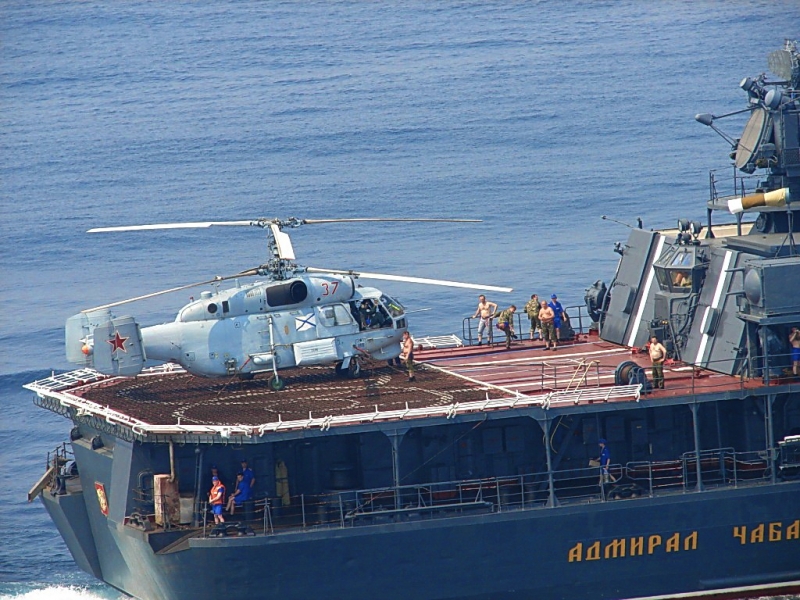
modifications
Ka-252TL – Helicopter telemetry as part of the ship's complex.
Ka-27E ("Counselor-SV") – radiation reconnaissance helicopter.
Ka-27M – The latest modification of the helicopter, equipped with radar and tactical command system, which includes the following systems: speaker, magnetometric, and radio reconnaissance radar with an active phased array antenna FH-A. The radar is installed under the fuselage and provides a circular field of view in the search and detection of surface, aerial and ground facilities. Serial modernization combatant helicopter to the level of the Ka-27M was scheduled to begin in 2014 year.
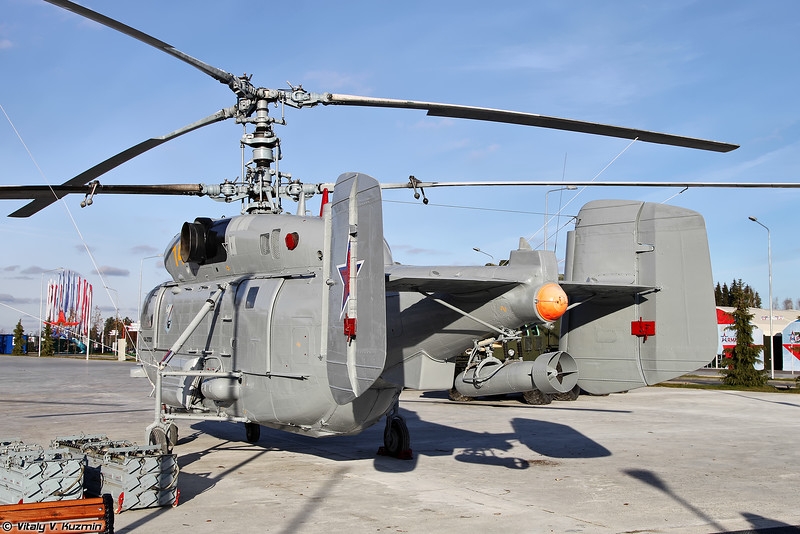
Ka-27PL
Ka-27PL – ASW helicopter deck.
Ka-28 – Exporting embodiment multipurpose Ka-27, with a simplified structure of the equipment. AT 21 century began partially comes in part MA RF, in view of the acute shortage of Ka-27.
Ka-29 – Transport-battle, for transportation, landing and fire support for Marines. Has gunnery and missile and bomb armament and local crew cabin reservations.
Ka-31 – (Ka-27RLD) AEW helicopter.
Ka-32 – civil modification, certified according to international standards of airworthiness FAR-29 / FAR-33 and comes to Canada, Malaysia, Switzerland, South Korea.
Ka-27E – On the basis of the Ka-27 was developed Ka-27E (Ka-252E "Counselor-SV"). The helicopter was based on the ship to ensure "Absheron" and was intended for the ships monitoring for the presence of radioactive materials on board. According to various sources, built several mashin.V currently Ka-27 is still in service with the Russian Navy, modification and "SS" is the demand for a simple reason - the helicopter is mainly used as a vehicle on ships and shore bases.
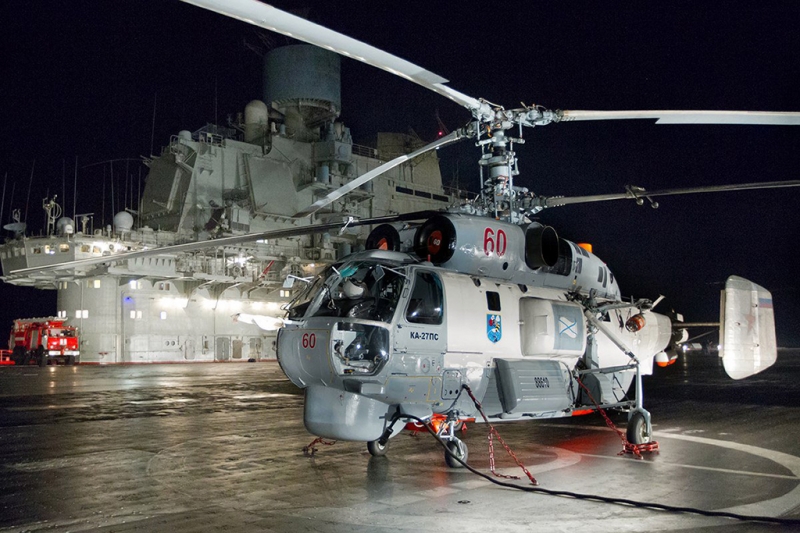
Ka-27PS
Ka-27PS – Maritime rescue helicopter Ka-27PS is designed to rescue or assist the crews of ships and aircraft, terpyashtih disaster, as well as search-entry spacecraft.
The composition includes special means radionavigation instrument A-817, designed to detect radar responder beacon and highlight their location on the display of circular radar survey. The composition of equipment includes VHF antenna on the nacelle and S1.7 block on the operator panel. Radar station, coupled with the equipment A-817, He received the designation "Octopus-PS". It provides searching drive CA spacecraft and other objects, equipped with radar beacons - defendants and marker buoys. To display the helicopter in a predetermined area on the beacon installed automatic radio ARC-UD. Measuring the radiation levels in the cockpit made DP-3B roentgenometer. Ka-27PS, installed navigation system IEC-252, which includes on-board electronic equipment of the automated system near navigation and landing A-340-SW-SIDE, exchange rate system "Comb-2", Doppler velocimeter and drift angle Diss-32, an airspeed sensor, barometric altimeter will see 30-15,, automatic direction finder.
Ka-27PS crew consists of four people: commander, navigator, flight engineer and paramedic rescue. Paramedic rescue has a full medical and diving training, Besides, It must also be ready to go down from the height of winch 50 m (exercise to lower the lifeguard in the sea wags nicknamed “fishing”). Modification of the rescue helicopter has a characteristic color - white board and wide red stripes on the abdomen and the back of the fuselage.
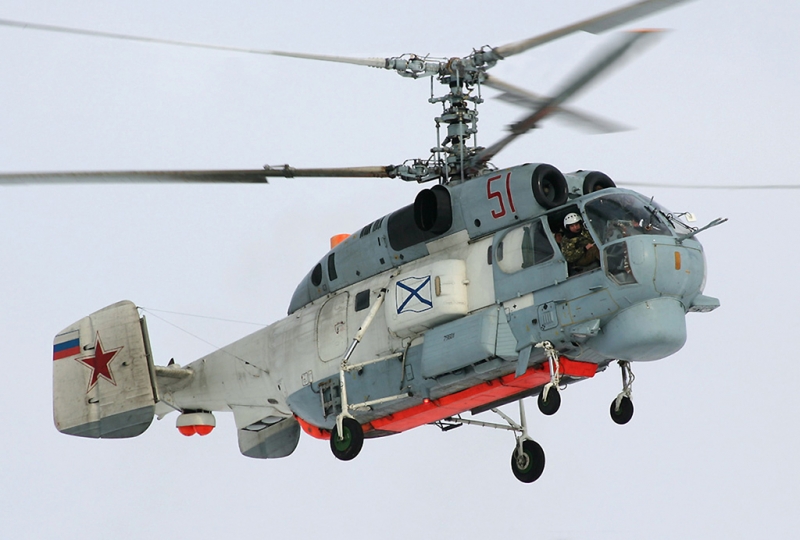
Rescue Helicopter has additional lifting means, Rescue and lighting. On the left side from outside the cargo door is installed lifting device - electric winch SLG-300, swinging mechanism, boom and hydraulic cylinder raising and lowering the boom - capacity up to 300 kg. By the lifting device can be attached or universal seat Strap, belt to lift the astronauts in the cradle. Resettable saving means comprise inflatable belt NP-2A, two boats LAS-5M-3, 12 Countertops n CH-6AM, two marker buoy "Call-M" system. Components search equipment varies widely depending on the objectives. Exist, eg, this option: 10 lifejackets, two plates nCH-6AM, two backsight Marine bomb Omaboe, extra fuel 110 l. To facilitate the search and rescue at night there are four additional headlamps PRF-4MP (power 1000 watt each), One FPP-7 and one DF-9. Besides, possible use of manual signaling lamp RSP-45. Headlights PRF-4MP and FPP-7M is used to illuminate the external load or terrain under helicopter, DF-9 - for lighting saved; two external lights PRF located below axis of symmetry of the fuselage on both sides. Emergency radios are composed of a set of "Call-M" and two marker shall automatically ejecta for defining the search object.
Search and rescue variant of the operating organization may be converted into a training. Workplace navigator mounted handle longitudinal-transverse control, directional control pedal, collective pitch lever. Instead 1S57 radar unit mounted instrument instructor plaque pointer speed, altitude and course, variometers, artificial horizon - only six instruments. When using a helicopter mounted sanitary embodiment four stretchers with fastening straps, seatbelts for the wounded. Health-care equipment includes two folding stool, two thermos by 3 l, paramedic table, tire set, two oxygen device GS-10, medical packing, water tank at 3 l. Sanitary equipment consists of a bucket, hygiene kits, two inflatable mattress with pump pumps to fill them, army blankets, Urinal.
Ka-27PSD – Search and rescue helicopter Ka-27PSD is a further development of the Ka-27PS. It differs, that has increased to 12 000 kg maximum takeoff weight. It reinforced chassis, installed additional fuel tanks (the total capacity of the fuel system in this helicopter reached 4830 l).
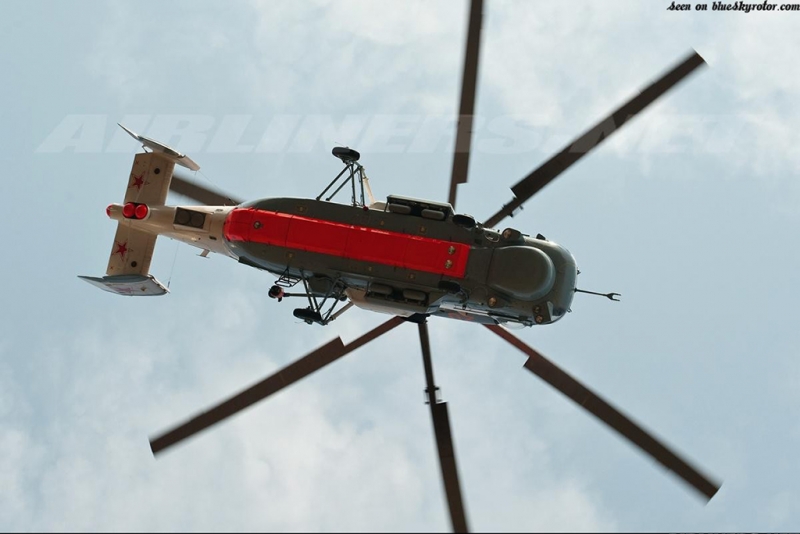
The performance characteristics of the Ka-27
– chief designer: FROM. AT. Mikheev
– First flight: 24 December 1973 of the year
– Getting Started: 1981 year
– units produced: 267
The crew of the Ka-27
– 3 man
Capacity Ka-27
– 5000 kg
Overall dimensions of the Ka-27
– fuselage length: 12,25 m
– The diameter of the rotor: 15,9 m
– Maximum fuselage width: 3,8 m
– Height: 5,4 m
Weight Ka-27
– empty weight: 6100 kg
– Normal takeoff weight: 10 700 kg
– Maximum takeoff weight: 12 000 kg
– Mass fuel in internal tanks: 4770 l
Engines Kamov Ka-27
– Power point: 2 × turboshaft "Klimov" TVZ-117VK
– engine power: 2 × 2000 l. from. (in the takeoff mode)
Ka-27 speed
– The maximum permissible speed: 290 kmh
– full speed: 270 kmh
– Cruising speed: 220 kmh
Range of the Ka-27 flight
– 900 km (on high 1500 meat takeoff weight 10 700 kg at an average speed 220 kmh)
Practical ceiling Ka-27
– 5000 m
Static ceiling Ka-27
– 3500 m
Dynamic ceiling Ka-27
– 3000 m
Photo Kamov Ka-27
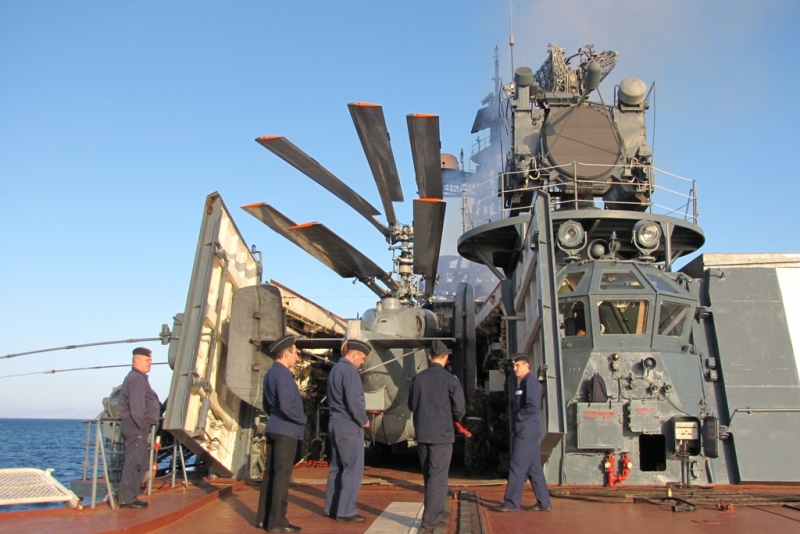
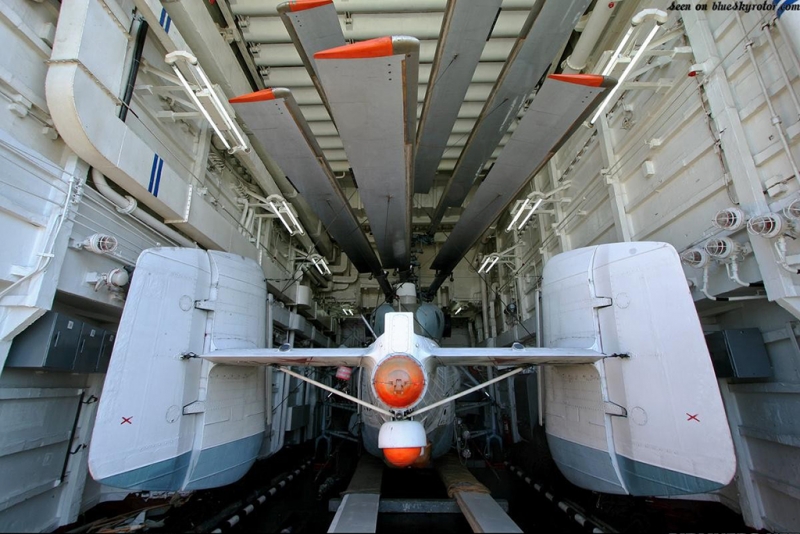
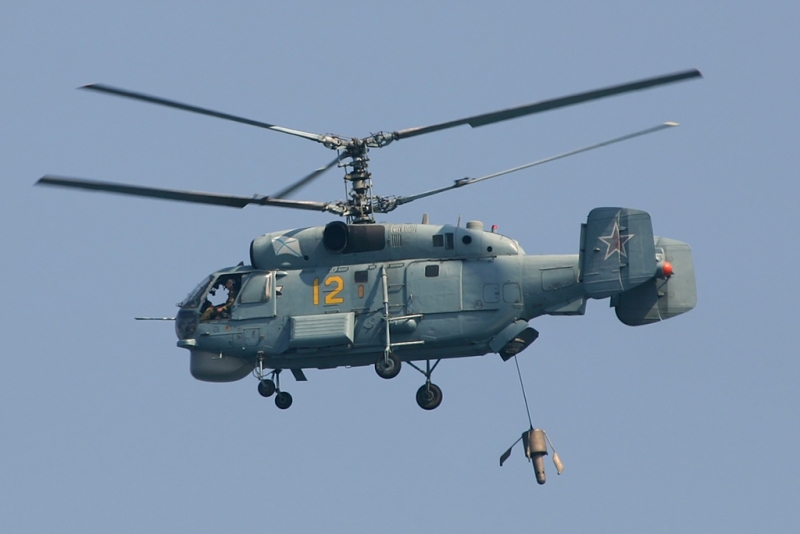
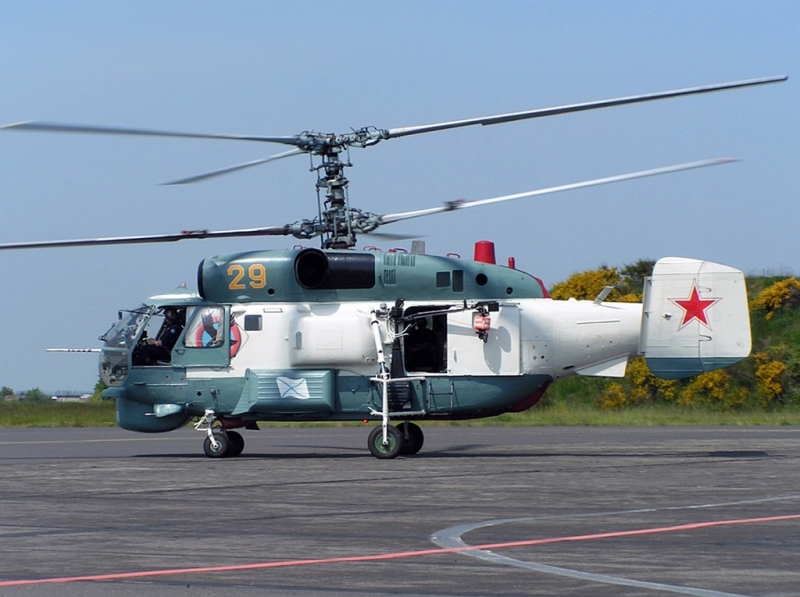
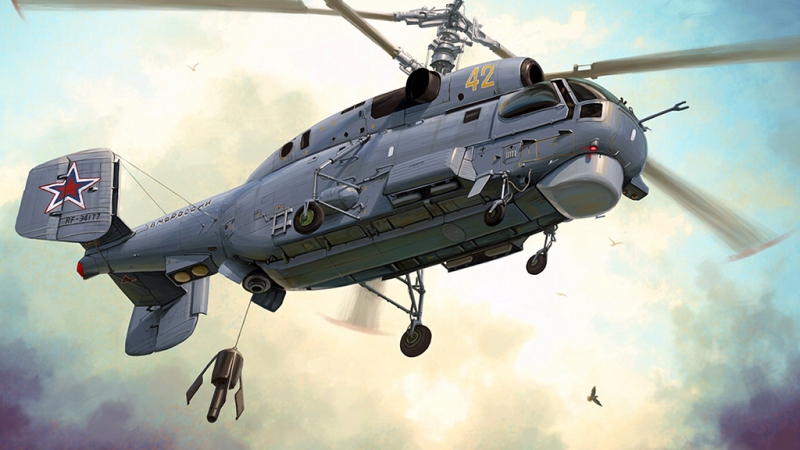
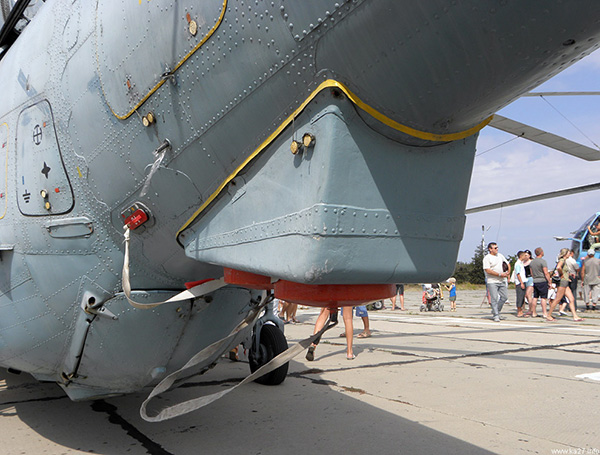
Cabin Ka-27
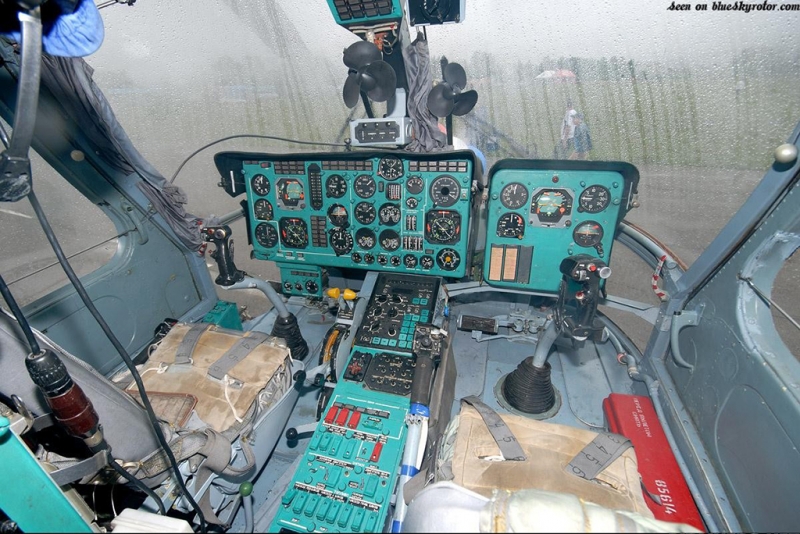
Cabin Ka-27PS
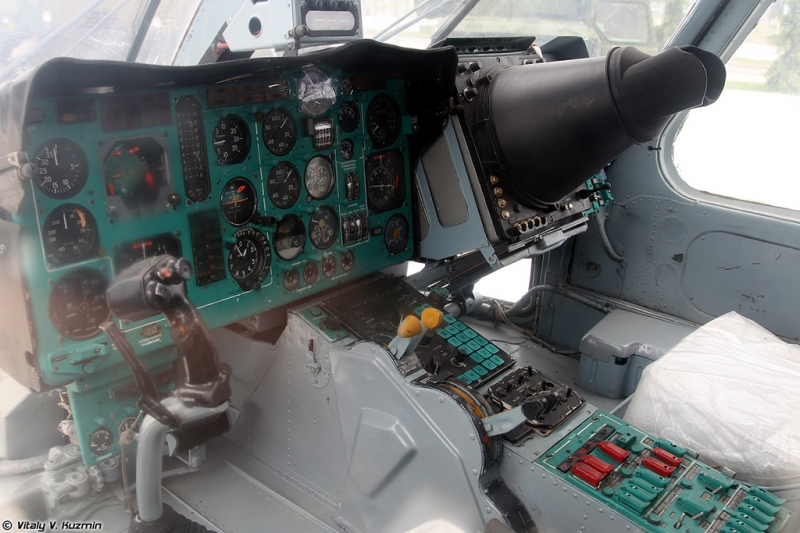
Cabin Ka-27PL, from navigator have radar, by which it detects enemy submarines
Inside the Ka-27
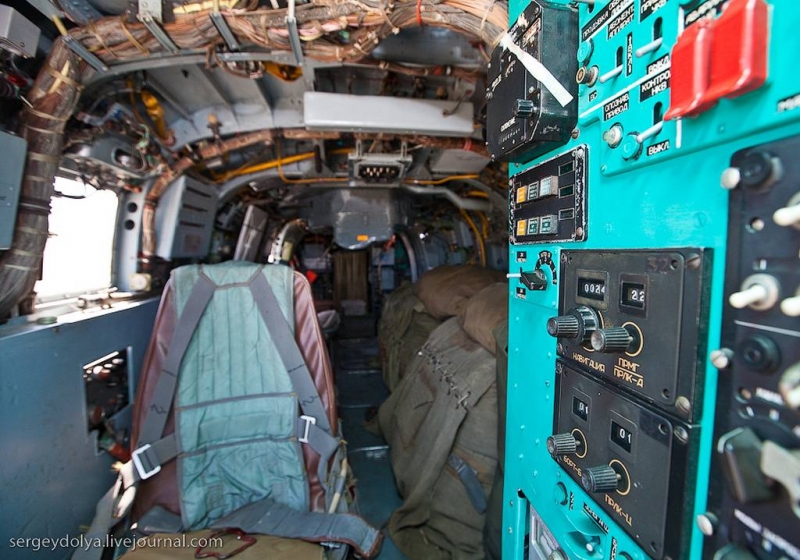
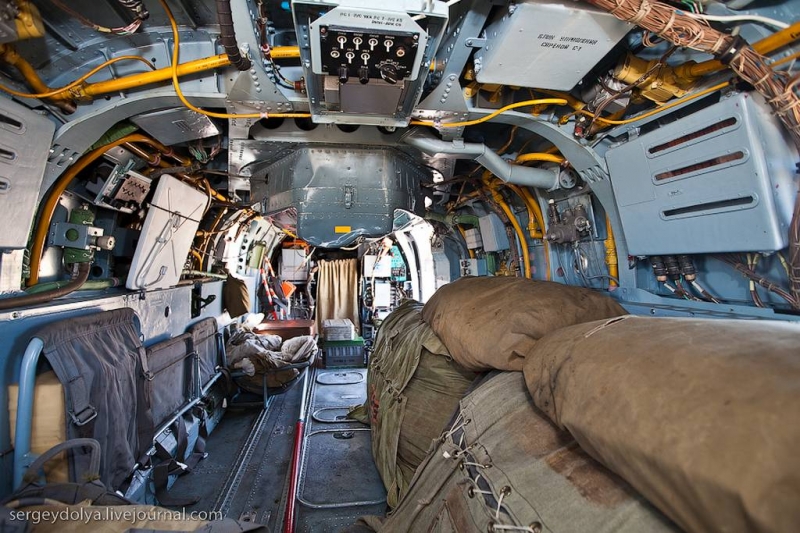
In the cabin of the helicopter, are bags with warm clothes, which are delivered to the vessel in distress
